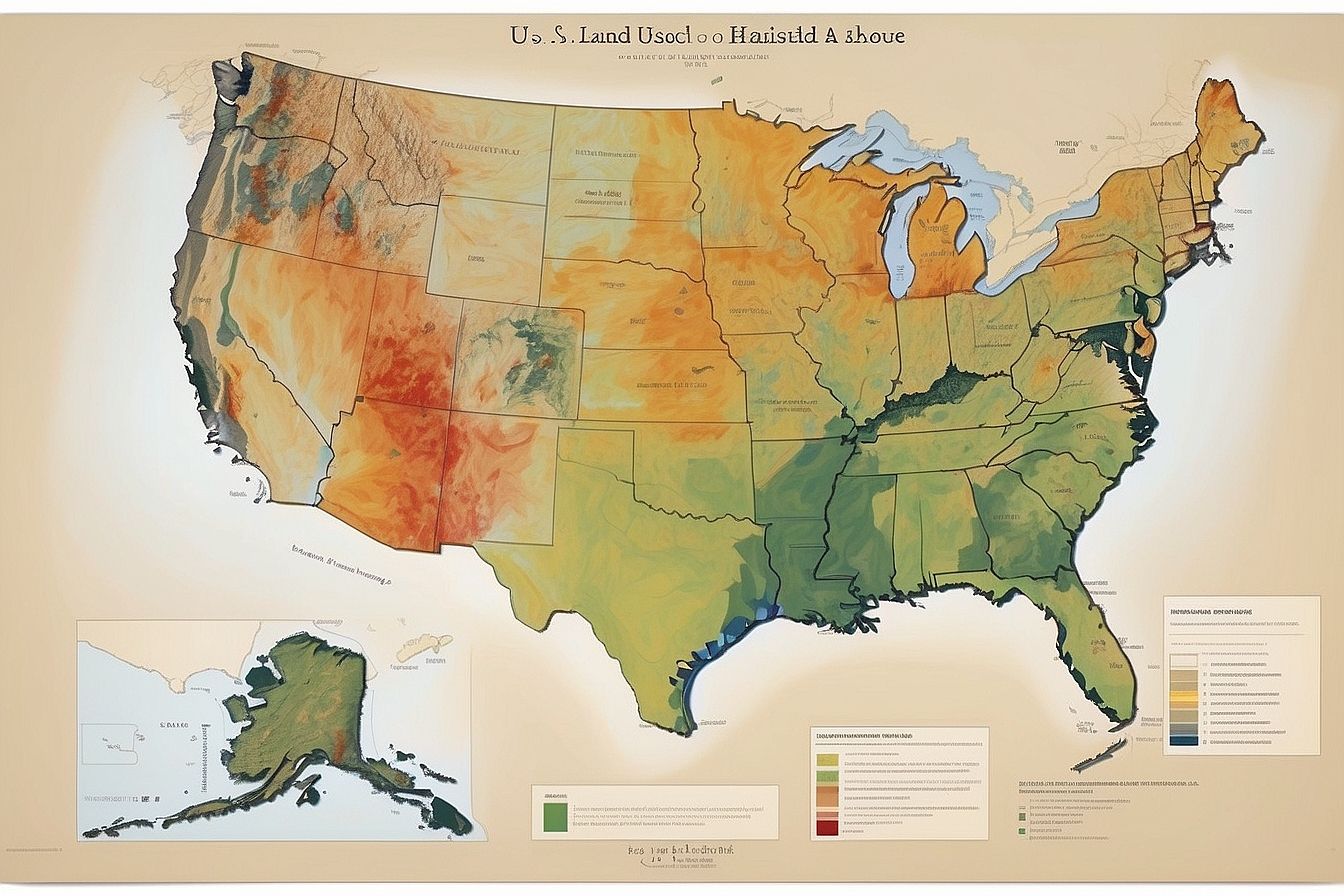Cities are on the brink, grappling with burgeoning populations and environmental challenges. It’s a shared predicament – we’ve all seen the toll that rapid urban expansion can take, how it threatens to choke the very life out of our metropolises.
That’s precisely what propelled us to seek out solutions – to inject vitality into our sprawling urban landscapes. Our article delineates sensible, actionable measures for converting our hectic cities into bastions of sustainability where economy, community, and nature coexist harmoniously.
Do carry on reading – it’s about time we painted a fresh vision for urban living!
Key Takeaways
- Urban planning is essential for designing cities that balance environmental protection, economic growth, and social equality.
- Sustainable cities support a high quality of life by promoting green spaces, efficient land use, renewable energy sources, and responsible waste and water management.
- By focusing on mixed – use developments and prioritising public transport options like walking, cycling and mass transit systems, we can reduce carbon emissions and reliance on cars.
- Involving local communities in urban development decisions leads to more inclusive cities where all residents have access to necessary resources and opportunities.
- Fostering civic pride through community engagement helps create a strong sense of responsibility towards the sustainable development of our urban environments.
The Concept of Sustainable Cities
Sustainable cities are designed to minimise resource consumption, reduce pollution, and support a high quality of life for their residents. Green urban planning focuses on creating green space, promoting multimodal transportation, and implementing sustainable initiatives to build smart and livable cities.
Definition of Sustainable City
Imagine cities designed with the future in mind – that’s what we mean by a sustainable city. It’s an urban space crafted to respect and protect the environment while ensuring economic vitality and fostering social equity.
We aim for these cities to thrive long-term without depleting natural resources or harming ecosystems. They incorporate green spaces, endorse efficient use of energy, manage waste responsibly, and provide clean air and water.
We’re talking about places where you can live well without compromising the planet’s health or the prospects of future generations. These cities prioritise sustainable architecture, smart urban design, and transitoriented development that reduces reliance on cars by encouraging walking, cycling and public transport usage.
Green urbanism is at their core; this not only preserves biodiversity but also enhances residents’ quality of life through mixed-use developments that blend living spaces with amenities close by.
10 Characteristics of Green Urban Planning
When planning sustainable cities, it is important to incorporate green urban planning principles. Green urban planning focuses on creating environmentally friendly and people-centric cities. Here are the 10 characteristics of green urban planning:
- Efficient Land Use: Utilising land effectively by promoting mixed-use development and reducing urban sprawl.
- Accessible Public Transport: Prioritising walking, cycling, and public transportation to reduce reliance on private vehicles.
- Energy-Efficient Buildings: Encouraging the construction of energy-efficient structures to minimise carbon emissions.
- Sustainable Infrastructure: Implementing climate-resilient infrastructure to withstand environmental challenges.
- Green Spaces: Providing ample parks, gardens, and natural areas for recreation and biodiversity conservation.
- Waste Management: Adopting efficient waste management practices such as recycling and composting to reduce landfill use.
- Water Conservation: Incorporating water-saving technologies and promoting responsible water usage throughout the city.
- Renewable Energy Integration: Embracing renewable energy sources like solar, wind, and hydro power for a sustainable energy mix.
- Community Engagement: Involving local communities in decision-making processes for better urban development outcomes.
- Cultural Preservation: Safeguarding historical sites and cultural heritage within the city’s development plans.
Strategies for Creating Sustainable Cities
We will discuss various strategies for creating sustainable cities, including urban planning for economic opportunities, environmental conservation, promoting social equity and civic pride.
It’s important to consider the role of city planning in developing smart and sustainable communities.
Urban Planning for Economic Opportunities
Urban planning plays a crucial role in creating economic opportunities within cities. By strategically zoning areas for commercial and industrial development, cities can attract businesses, create job opportunities, and stimulate economic growth.
This involves thoughtful consideration of land use, transportation connectivity, and infrastructure development to support diverse industries.
Mixed-use developments with residential, commercial, and recreational spaces can also foster economic vibrancy by encouraging local entrepreneurship and small business growth. Additionally, sustainable urban development initiatives such as energy-efficient buildings and green spaces not only contribute to environmental conservation but also enhance the appeal of a city for potential investors and businesses looking for smart city infrastructure.
Environmental Conservation
As we prioritise urban planning for economic opportunities, environmental conservation should also be central to our efforts. Creating sustainable cities involves developing green spaces and preserving natural habitats.
Integrating climate-resilient infrastructure into urban design is crucial to conserving our environment and promoting biodiversity.
Embracing mixed-use development in urban areas can reduce the need for long commutes, minimising carbon emissions. Smart city technologies play a vital role in monitoring and managing energy consumption, waste management, and air quality.
Promoting Social Equity
Transitioning from the imperative need for environmental conservation, promoting social equity is another pivotal aspect of sustainable urban planning. In creating cities that are equitable and inclusive, it’s vital to ensure access to essential resources and opportunities for all residents.
By prioritizing affordable housing options, accessible public transportation, and community amenities such as parks and recreational areas, we can foster a more inclusive urban environment.
Implementing policies that aim to eliminate disparities in education, healthcare, and employment can also contribute to the creation of socially just cities. Additionally, involving local communities in the decision-making process regarding urban development projects empowers citizens and ensures their needs are met.
Civic Pride
Creating a sustainable city involves fostering civic pride among its residents. Encouraging community engagement and involvement in urban planning decisions is crucial for building a sense of ownership and responsibility towards the city’s development.
By actively participating in initiatives such as community gardens, local clean-up projects, or heritage preservation efforts, individuals become more connected to their surroundings and are more likely to take pride in their environment.
Promoting public spaces that reflect local culture and history can also enhance civic pride. Celebrating diversity through public art installations, festivals, and events fosters a strong sense of belonging and attachment to the city, encouraging citizens to uphold its values and contribute positively to its sustainable development.
Conclusion
In conclusion, sustainable urban planning is crucial for creating cities that thrive. We need to promote economic opportunities while conserving the environment and promoting social equity.
We can achieve this through smart, climateresilient infrastructure and mixeduse development. By fostering civic pride in our communities, we can build sustainable cities for a better tomorrow.
FAQs
1. What is the goal of urban planning in creating sustainable cities?
The goal of urban planning for sustainable cities is to design smart, climate-resilient infrastructure and mixed-use development that support social justice.
2. How do smart cities help the environment?
Smart cities use technology to manage resources efficiently, which reduces waste and helps create a cleaner environment.
3. Can urban planning promote social justice in cities?
Yes, through careful design and inclusive policies, urban planners can ensure that all residents have equal access to city benefits and opportunities.
4. Why is mixed-use development important in sustainable cities?
Mixed-use development allows people to live, work, and play in one area, cutting down on travel time and making communities more vibrant and efficient.





